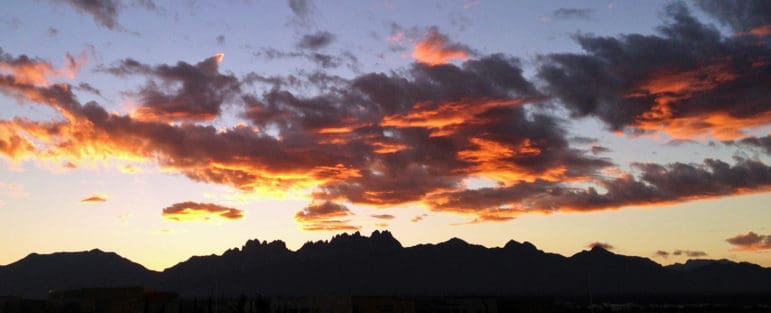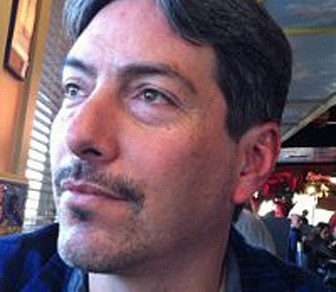
Heath Haussamen / NMPolitics.net
The Organ Mountains near Las Cruces, which are protected in a national monument created by President Barack Obama.
COMMENTARY: President Obama’s recent visit to Carlsbad Caverns underscored how important having protected natural areas and historic sites is to local communities and our state and the nation as a whole — and it provides us with a great opportunity to reflect on Obama’s public lands legacy.
Here in New Mexico, Obama has protected more than 725,000 acres of public lands in two national monuments. His doctrine has been to not only protect lands of scenic beauty and ecological importance; it has also focused on celebrating our nation’s history and the diverse voices that tell different parts of the American story. The Organ Mountains-Desert Peaks and Rio Grande del Norte National Monuments are great examples protecting natural beauty as well as areas that are critical to telling the full story of the West.

Courtesy photo
Henry Rael
Recently, a coalition of diverse voices (http://bit.ly/centdiv) outlined a bold agenda for the future of our national parks and other public lands. Taking their cue from President Obama – who has protected more land and water than any modern president, including spaces that commemorate African-American, Native American, Latino, Asian-American, and women’s history – this group has developed a Centennial Vision Statement for the next 100 years of our shared public lands.
This vision includes ensuring our public lands are inclusive and reflect the stories and struggles of all Americans. As a part of this approach, the coalition developed the following three guiding principles to inform future public-lands policy:
- Protected lands and the people who work to preserve them must reflect the diversity of our great nation.
- Protected lands should respect all cultures and strive to tell the complex stories of American history while honoring the unique contributions of Americans from all walks of life and every background.
- Our focus must be on engaging all people so that Americans can come together as one to appreciate and advocate for our shared national treasures.
These guiding principles should not only inform how our country goes about protecting new lands and creating new parks, it should also allow us to breathe new life into existing parks, monuments, forests and wildlife refuges by attracting new visitors and connecting more of us to our national heritage.
To achieve this vision, the coalition, made up of more than 40 civil rights, environmental justice and conservation groups from across the country, has asked President Obama to issue a presidential memorandum that encourages our nation’s land management agencies to adopt this more inclusive, future-facing strategy.
You might be asking yourself: Our public lands are fine just as they are, why do we need a shift in how we think about the stories they tell and whether they are being inclusive?
The answer to this question is simple.
Our National Parks have been called “America’s greatest idea.” But as with any great idea, there is always room for growth and improvement.
As we approach the next 100 years of preserving America’s legacy, we can open our arms and our hearts and recognize how our country has grown and become more diverse than ever before. This diversity is a positive thing and a source of strength. Likewise, our greatest national idea should also grow to accommodate the voices and faces of all Americans.
If the public lands do not grow and adapt to our changing country, than that would essentially tell wide swaths of our population that their stories and their experiences do not matter. This exclusivity will only serve to drive people apart. It also weakens our ability to have a strong base of public support for these places. That means fewer volunteers to complete on-the-ground projects; fewer talented people to hire for research, outreach and public education; and fewer people to raise their voices to seek adequate funding and protections.
All Americans own our public lands and have the right to enjoy them. If our system of protected public lands can actually serve to celebrate all Americans – their contributions and their stories – then we are ensuring the future health of our public lands, as people from all walks of life will feel more than just welcome there. They will feel truly at home.
Henry Rael is a South Valley resident and Valle del Oro National Wildlife Refuge supporter.